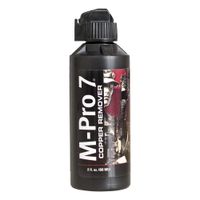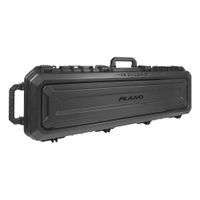Call +(254) 703 030 000 / 751 483 999 / 721 704 777
- Home
- Security
- Military Tactical Public Security Equipment
- Weapon Storage Maintenance Shooting Targets
.....Read More
Frequently Asked Questions
How should firearms be stored to ensure safety and security?
Firearms should be stored with a focus on safety and security to prevent unauthorized access and accidents. Here are key guidelines:
1. **Use a Gun Safe or Lockbox**: Store firearms in a locked gun safe or lockbox that is tamper-proof and meets safety standards. This prevents unauthorized access, especially by children or intruders.
2. **Unload Firearms**: Always store firearms unloaded. Ammunition should be stored separately in a locked container to minimize the risk of accidental discharge.
3. **Secure with Trigger or Cable Locks**: Use trigger locks or cable locks as an additional safety measure. These devices prevent the firearm from being loaded or fired.
4. **Store in a Cool, Dry Place**: Keep firearms in a location that is cool and dry to prevent rust and damage. Avoid areas with high humidity or temperature fluctuations.
5. **Limit Access**: Only authorized individuals should have access to the storage location. Keep keys or combinations secure and confidential.
6. **Educate Family Members**: Educate family members, especially children, about the dangers of firearms and the importance of not handling them without supervision.
7. **Install Security Systems**: Consider installing security systems, such as alarms or surveillance cameras, to monitor the storage area and deter theft.
8. **Regularly Check and Maintain**: Regularly check the condition of stored firearms and the security of the storage system. Perform maintenance as needed to ensure functionality and safety.
9. **Follow Legal Requirements**: Adhere to local, state, and federal laws regarding firearm storage. Some jurisdictions have specific requirements for how firearms must be stored.
By following these guidelines, firearm owners can significantly reduce the risk of accidents and unauthorized use, ensuring a safer environment for everyone.
What are the best practices for maintaining and cleaning firearms?
1. **Safety First**: Always ensure the firearm is unloaded before cleaning. Remove the magazine and check the chamber.
2. **Gather Supplies**: Use a cleaning kit with a bore brush, cleaning rod, patches, solvent, lubricant, and a microfiber cloth.
3. **Disassemble**: Follow the manufacturer’s instructions to disassemble the firearm to the recommended level for cleaning.
4. **Clean the Barrel**: Attach a bore brush to the cleaning rod, apply solvent, and run it through the barrel several times. Follow with clean patches until they come out clean.
5. **Clean Other Components**: Use a nylon brush and solvent to clean the slide, frame, and other parts. Pay attention to the nooks and crannies where dirt accumulates.
6. **Inspect for Wear**: Check for signs of wear or damage, such as cracks or rust, and address any issues immediately.
7. **Lubricate**: Apply a light coat of lubricant to moving parts to ensure smooth operation. Avoid over-lubrication, which can attract dirt.
8. **Reassemble**: Carefully reassemble the firearm, ensuring all parts are correctly aligned and secured.
9. **Function Check**: Perform a function check to ensure the firearm operates correctly after reassembly.
10. **Storage**: Store the firearm in a cool, dry place, ideally in a gun safe. Use a dehumidifier if necessary to prevent rust.
11. **Regular Maintenance**: Clean the firearm after each use and conduct regular maintenance checks, even if it hasn’t been used.
12. **Record Keeping**: Maintain a log of cleaning and maintenance activities for each firearm.
13. **Follow Manufacturer’s Guidelines**: Adhere to specific cleaning and maintenance instructions provided by the firearm manufacturer.
What types of storage solutions are available for military and law enforcement firearms?
Military and law enforcement agencies utilize a variety of storage solutions to ensure the secure and efficient management of firearms. These solutions include:
1. **Armory Rooms**: Secure, dedicated spaces within facilities designed to store large quantities of firearms. They are equipped with reinforced doors, surveillance systems, and access control measures to prevent unauthorized entry.
2. **Gun Safes**: Heavy-duty, lockable containers that provide secure storage for firearms. They are often used for smaller quantities of weapons and can be equipped with biometric, electronic, or combination locks.
3. **Weapon Racks**: Metal or reinforced racks designed to hold multiple firearms in an organized manner. They are often used within armories to maximize space and ensure easy access and inventory management.
4. **Lockers**: Individual storage units that can be used to store personal firearms or small quantities of weapons. They are typically used in barracks or police stations for personal issue weapons.
5. **Mobile Armories**: Portable storage solutions, such as secure containers or vehicles, that allow for the transport and temporary storage of firearms in the field or during deployments.
6. **Smart Storage Systems**: Advanced systems that incorporate RFID technology, biometric access, and digital inventory management to enhance security and tracking of firearms.
7. **Vaults**: Highly secure rooms or enclosures within a facility, often used for storing high-value or sensitive weapons. They are constructed with reinforced materials and advanced security systems.
8. **Gun Cabinets**: Smaller, lockable cabinets used for storing firearms in a secure manner, often used for less critical storage needs.
These solutions are designed to ensure the safety, security, and accountability of firearms, preventing unauthorized access and loss.
How can firearms be transported safely and legally?
To transport firearms safely and legally, adhere to the following guidelines:
1. **Know the Laws**: Research and comply with federal, state, and local laws regarding firearm transportation. Laws vary significantly by jurisdiction.
2. **Unloaded Firearms**: Ensure all firearms are unloaded before transport. This is a legal requirement in many areas and a fundamental safety practice.
3. **Secure Storage**: Use a locked, hard-sided container for firearms. This prevents unauthorized access and protects the firearm during transit.
4. **Separate Ammunition**: Store ammunition separately from the firearm, ideally in a locked container. Some jurisdictions require this by law.
5. **Concealment**: Keep firearms out of plain view. This reduces the risk of theft and complies with laws that prohibit open display during transport.
6. **Transport in Trunk**: If using a vehicle, place the firearm in the trunk or rear storage area. If the vehicle lacks a trunk, use a lockable case secured to the vehicle.
7. **Air Travel**: When flying, declare firearms at check-in and ensure they are in a TSA-approved locked case. Follow airline-specific regulations and TSA guidelines.
8. **Documentation**: Carry necessary permits and documentation, such as a concealed carry license or firearm registration, if required by law.
9. **Interstate Travel**: Be aware of the Firearm Owners Protection Act (FOPA), which allows for the legal transport of firearms across state lines under specific conditions.
10. **Professional Transport Services**: Consider using licensed firearm transport services for long-distance moves or when unsure about legal requirements.
11. **Avoid High-Risk Areas**: Plan routes to avoid areas where firearms are prohibited, such as school zones or federal buildings.
By following these steps, you can ensure the safe and legal transport of firearms.
What are the most effective shooting targets for training purposes?
The most effective shooting targets for training purposes vary based on the specific skills being developed, but generally include:
1. **Paper Targets**: These are versatile and cost-effective, often featuring bullseyes, silhouettes, or grid patterns. They help shooters practice accuracy, grouping, and sight alignment. Scoring rings provide measurable feedback.
2. **Steel Targets**: Known for their durability and instant auditory feedback, steel targets are ideal for practicing speed and accuracy. They are often used in tactical and competitive shooting to simulate real-world scenarios.
3. **Reactive Targets**: These targets move, fall, or change color upon being hit, providing immediate visual feedback. They are excellent for dynamic shooting drills and improving reaction times.
4. **3D Targets**: Often used in hunting and tactical training, 3D targets simulate real-life scenarios with lifelike shapes and sizes, helping shooters practice shot placement and target identification.
5. **Electronic Targets**: These high-tech options provide instant digital feedback on shot placement and scoring. They are useful for precision shooting and competitive training, offering detailed analytics.
6. **Silhouette Targets**: Commonly used in law enforcement and self-defense training, these targets help shooters practice aiming at human-like shapes, focusing on vital areas.
7. **Clay Targets**: Used primarily in shotgun sports, clay targets improve tracking and shooting moving objects, enhancing hand-eye coordination and timing.
8. **Interactive Targets**: These targets incorporate technology to simulate various scenarios, offering a comprehensive training experience for tactical and defensive shooting.
Selecting the right target depends on the training goals, whether it's improving accuracy, speed, decision-making, or situational awareness. Combining different types of targets can provide a well-rounded training regimen.
How often should firearms be inspected and serviced?
Firearms should be inspected and serviced regularly to ensure their safe and reliable operation. The frequency of inspection and servicing can depend on several factors, including the type of firearm, its usage, and the manufacturer's recommendations.
1. **Regular Inspection**: Firearms should be visually inspected before and after each use. This includes checking for any obvious signs of wear, damage, or malfunction. Key areas to inspect include the barrel, action, and safety mechanisms.
2. **Routine Cleaning**: After each use, firearms should be cleaned to remove any residue, dirt, or moisture that could affect performance. This involves disassembling the firearm as per the manufacturer's instructions, cleaning the barrel and action, and lubricating moving parts.
3. **Periodic Servicing**: Even if a firearm is not used frequently, it should be serviced at least once a year. This involves a more thorough inspection and maintenance routine, which may include checking the firing pin, springs, and other internal components for wear and tear.
4. **High-Usage Firearms**: Firearms that are used frequently, such as those used in law enforcement or competitive shooting, may require more frequent servicing. Monthly or quarterly inspections and servicing may be necessary to ensure optimal performance and safety.
5. **Professional Servicing**: At least once every few years, or if any issues are detected during routine inspections, firearms should be serviced by a qualified gunsmith. They can perform detailed inspections, repairs, and adjustments that may not be possible for the average user.
6. **Manufacturer's Guidelines**: Always refer to the firearm's manual for specific maintenance schedules and procedures recommended by the manufacturer.
Regular inspection and servicing are crucial for maintaining the safety, reliability, and longevity of firearms.
What materials are recommended for firearm storage cabinets and racks?
For firearm storage cabinets and racks, the recommended materials focus on durability, security, and protection from environmental factors:
1. **Steel**: Steel is the most common material for firearm storage due to its strength and durability. It provides excellent protection against unauthorized access and environmental damage. Look for cabinets with a minimum of 12-gauge steel for adequate security.
2. **Aluminum**: While not as strong as steel, aluminum is lightweight and resistant to corrosion. It is suitable for racks or cabinets where weight is a consideration, such as in mobile or temporary setups.
3. **Wood**: Hardwood like oak or maple can be used for gun racks, offering a classic aesthetic. However, wood is less secure than metal and should be used in conjunction with other security measures. It is more suitable for display purposes in secure environments.
4. **Composite Materials**: Some cabinets use composite materials that combine metal with other elements to enhance strength and reduce weight. These can offer a balance between security and portability.
5. **Foam and Rubber Linings**: Inside the cabinets or racks, foam or rubber linings are recommended to protect firearms from scratches and damage. These materials also help in reducing moisture build-up, which can lead to rust.
6. **Powder Coating**: For metal cabinets, a powder-coated finish is recommended to prevent rust and corrosion, extending the life of the storage unit.
7. **Fire-Resistant Materials**: For added protection, especially in safes, materials with fire-resistant properties are recommended. These can include special fireboard or gypsum layers that help protect firearms from heat damage.
Choosing the right materials depends on the specific needs, such as security level, environmental conditions, and whether the storage is for display or purely functional purposes.




